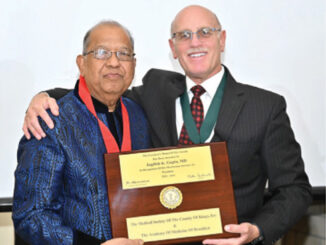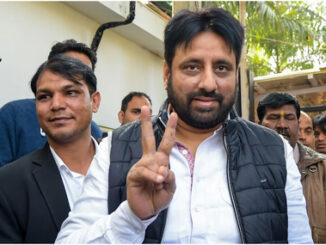
Dussehra and Vijay Dashmi represent different names for the same Hindu festival, observed on the tenth day of the Ashvin month in the Hindu calendar. This significant festival symbolizes the triumph of good over evil and is alternatively referred to as Dasara, Dashain, and Navratri Puja in different regions. It is going to be celebrated across the country on October 24 this year. Dussehra or Dusshera is celebrated to mark Lord Rama’s victory over the demon Ravana that signifies the triumph of good over evil. On Dussehra, huge effigies of Ravana are burnt with fireworks which symbolize the quelling of darkness by light. Dussehra also paves the way for the next big festival of Diwali (the festival of lights) which is celebrated across India with great pomp and fervour. Diwali is celebrated twenty days after Dussehra and signifies the return of Lord Rama, Sita and Lakshman to Ayodhya after killing the demon Ravana.The word ‘Dussehra’ signifies the meaning of the festival itself. The word is formed from two words – Dus and Ahara. ‘Dus’ means ten and ‘Ahara’ means day, so tenth day. Another meaning comes from the mythology of the festival where ‘Dus’ signifies the ten heads of Ravana or bad or evil and ‘hara’ means to defeat or removal. In the northern and western states of India Dussehra is celebrated in the honour of Lord Rama who was an avatar of Lord Vishnu. Plays based on Ramayana and Ramcharitmanas called Ramlila are performed at outdoor fairs by theatre troupes. Dussehra is also celebrated as Vijayadashami and also signifies the killing of demon Mahishasura by Goddess Durga on the tenth day of Navratri.
Victory of Ram over Ravan
On this day Ram (the seventh avatar of Vishnu) killed Ravan, who had abducted Ram’s wife Sita to his kingdom Lanka. Ram, his brother Lakshman, their disciple Hanuman and an army fought a battle to rescue Sita. The story is recorded in the Hindu epic, the Ramayan.
On the day of Ashvin Shukla Dashami, Ram defeated Ravana and rescued Sita. Based on inferences from Valmiki’s Ramyan, Kalidas’s Raghuvasa, Tulsidas’ Ramcharitmanas and Keshavdas’ Ramchandrika, Ram, Sita and Lakshman returned to Ayodhya on the 30th day of Ashwin (19–20 days after Vijayadashami). To celebrate Ram’s return, in the evening the city’s residents lit millions of earthen lamps (deepak); the day is celebrated in India as Deepawali.
Durga’s victory over Mahishasur
Some of the demigods (asurs) were powerful and ambitious, and tried to defeat the devs and capture heaven. One asur, Mahishasur, grew powerful and wreaked havoc on earth. Under his leadership, the asurs defeated the devs. The devs combined into Shakti (a mass of incandescent energy) to kill Mahishasur. A bolt of lightning emerged from the mouths of Brahma, Vishnu and Shiva, and a young, beautiful female virgin with ten hands appeared. The gods gave her their weapons, and Shakti coalesced to form the goddess Durga. On a lion who assisted her, Durga fought Mahishasur for nine days and nights; on the tenth day, Mahishasur was killed. Durga, as Shiv’s consort, represents two forms of female energy: mild and protective, and fierce and destructive.
Durga’s homecoming
Daksha (Brahma’s son) and his wife, Prasuti, had a daughter named Sati. As a child, Sati worshiped Shiva as her would-be husband. Shiva, pleased with her worship, married her. Although Daksha opposed the marriage, he could not prevent it. He arranged a yajna, to which everyone but Shiva was not invited. Sati, ashamed of her father’s behavior, killed herself. Shiva, anguished when he discovered this, lifted Sati’s body on his shoulders and began dancing; the world was on the verge of destruction.
Pandav exile
In the age of Dvapar Yug, the pandavs (the five sons of Pandu with his wife, Kunti) lost to the Kaurav in a dice game and were exiled in the forest for twelve years. The brothers hid their weapons in a hole in a Shami tree before they entered the kingdom of Virat to complete their final year of exile. After that year, on Vijayadashmi they recovered the weapons, declared their true identities and defeated Kauravas, who had attacked King Virat to steal his cattle. Since that day, Shami trees and weapons have been worshiped and the exchange of Shami leaves on Vijayadashmi has been a symbol of good will.
Kautsa’s gift
Kautsa, the young son of a Brahmin named Devdatt, lived in Paithan. After completing his education with Rishi Varatantu, he insisted that his guru accept a present. The guru said, “Kautsa, to give dakshina in return for learning wisdom is not appropriate. Graduation of the disciple makes the guru happy, and that is the real Guru Dakshina.”
Kautsa was not satisfied, since he still felt it his duty to give his guru something. The guru said, “All right, if you insist on giving me dakshina, then give me 140 million gold coins—10 million for each of the 14 sciences I have taught you.” Kautsa went to King Raghu, an ancestor of Rama who was known for his generosity. However, at that time he had spent all his money on the Brahmins. Raghu asked Kautsa to return in three days, and left to get gold coins from Indra. Indra summoned Kuber, the god of wealth. Indra told Kuber, “Make gold coins rain on the Shanu and Aapati trees around Raghuraja’s city of Ayodhya.” The rain of gold coins began. King Raghu gave the coins to Kautsa, who offered them to Varatantu Rishi. Since the guru had requested only 140 million, he returned the rest to Kautsa. Kautsa, considering honour more valuable than wealth, asked the king to take the remaining gold coins. The king refused, since kings do not take back a daan (gift). Kautsa distributed the gold coins to the people of Ayodhya. To commemorate this, leaves are plucked form the Aapati tree and given as gifts.
Celebrations
In Kashmir, Himachal Pradesh, Uttar Pradesh, Haryana, Punjab, Uttarakhand and western Bihar, it is tradition to plant barley in earthen pots on the first day of Navratri. On the day of Dussehra, the nine-day-old sprouts (called noratras or nortas) are used for luck; men place them in their caps or behind their ears.
In most of northern India and some parts of Maharashtra, Dasha-Hara is celebrated in honour of Rama. Plays based on the Ramayana (Ramlila) are performed at outdoor fairs, and large parades with effigies of Ravana (a king of ancient Sri Lanka), Kumbhakarna and Meghanada are held. The effigies are burnt on bonfires in the evening. After Dasara, the hot summer ends (especially in North India) and the onset of cold weather is believed to encourage infections. The burning of the effigies, filled with firecrackers containing phosphorus, supposedly purifies the atmosphere.
In the Kumaon region of Uttarakhand, Dasara begins with the performance of a Ramlila based on theatrical traditions begun by Uday Shankar during his stay in Almora and elaborated by Mohan Upreti and Brijendra Lal Sah. Known as the Almora or Kumaon style, the Ramlila was recognised by UNESCO in its 2008 report as a representative Indian style.
Kullu Dussehra, celebrated in the Kullu valley of Himachal Pradesh, begins on the tenth day of the rising moon and continues for seven days. Its history dates back to the 17th century, when King Jagat Singh installed an idol of Raghunath on his throne as a gesture of penance. After this, Raghunath was declared the ruling deity of the valley.
Mysore Dussehra as is the Nadahabba (state-festival) of the state of Karnataka in India. It is also called Navaratri (Nava-ratri = nine-nights) and is a 10-day festival with the last day being Vijayadashami, the most auspicious day of Dasara. Dasara usually falls in the month of September or October. According to a legend, Vijayadashami denotes the victory of truth over evil and was the day when the Hindu Goddess Chamundeshwari killed the demon Mahishasura. Mahishasura is the demon whose slaying by the Goddess gave the name Mysore. The city of Mysore has a long tradition of celebrating the Dasara festival with utter grandeur and pomp to mark this day and the festivities there are an elaborate affair, attracting a large audience including foreigners.





Be the first to comment